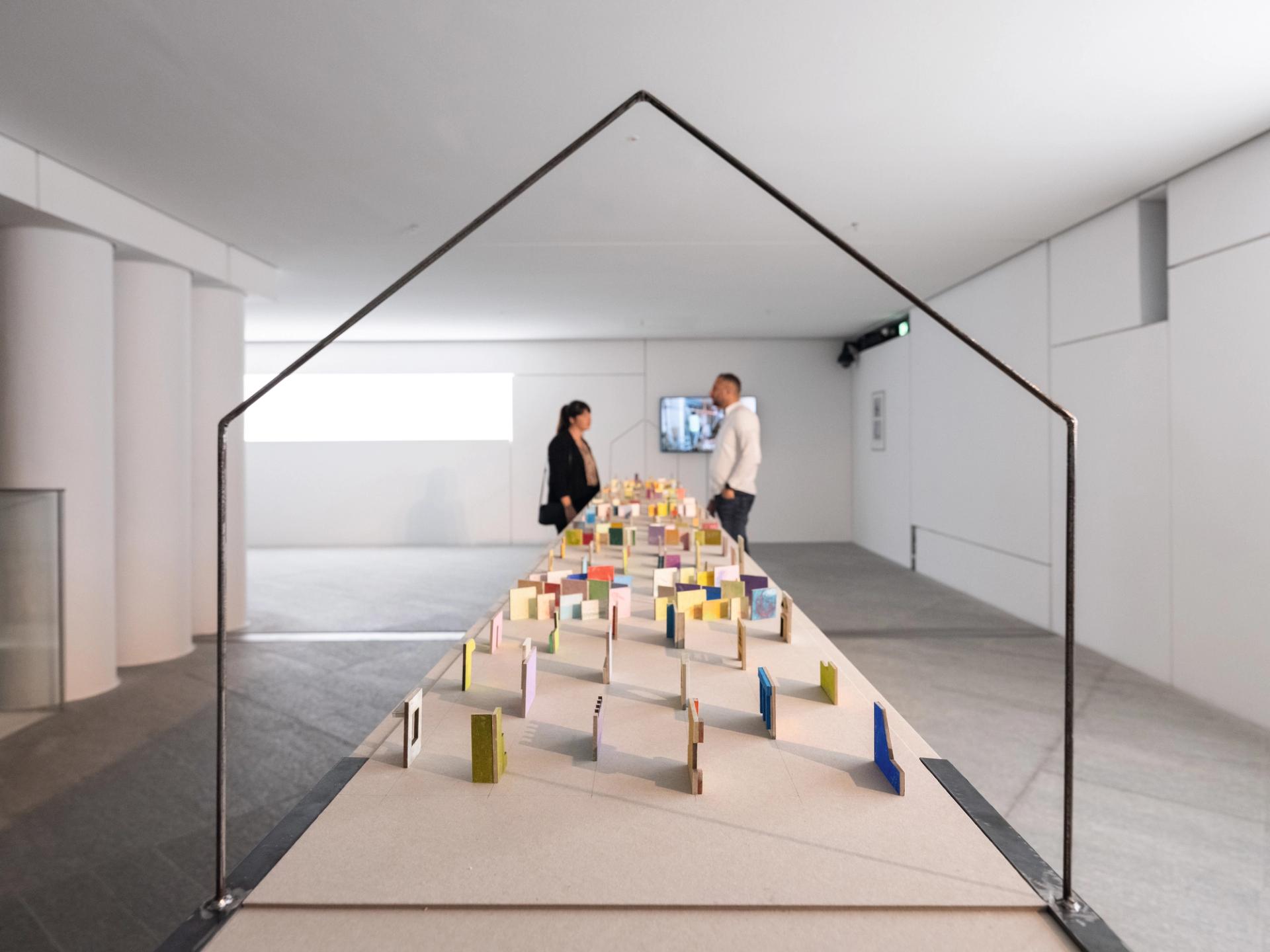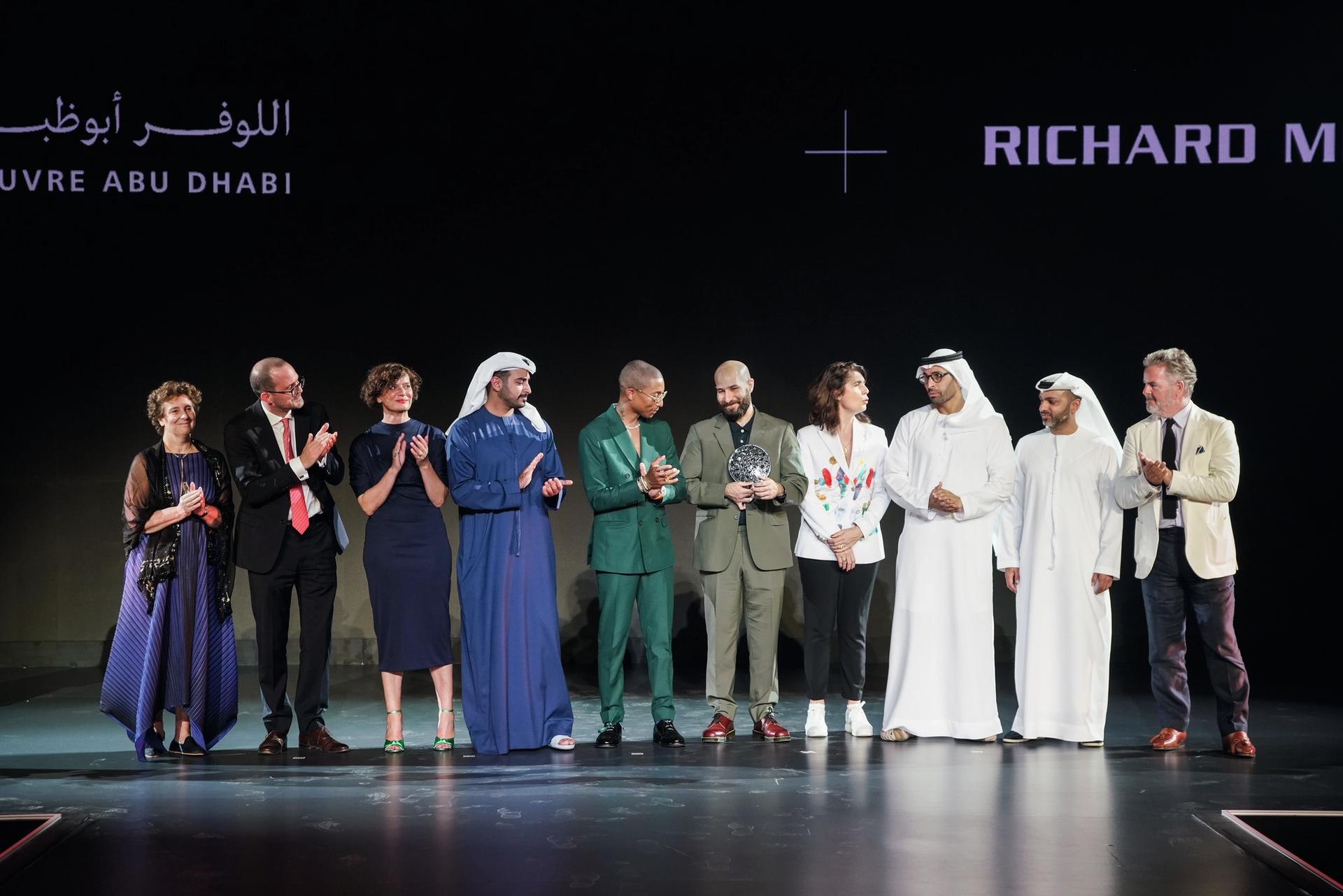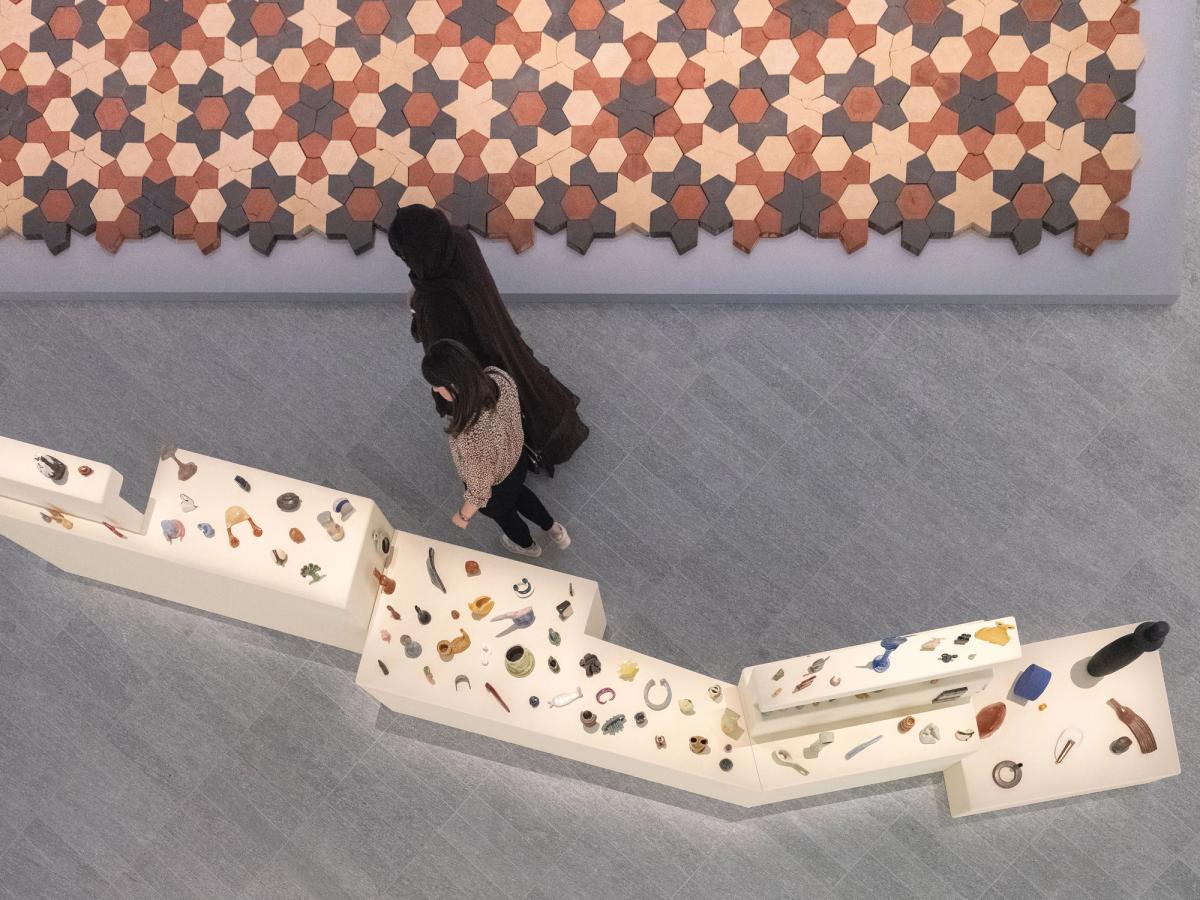The Louvre Abu Dhabi opened just over five years ago—but five years is a long time in the rapidly developing art scene of the United Arab Emirates.
“I think five years ago that generation of artists would have been terrified to propose something to be exhibited at the Louvre Abu Dhabi,” says Nasser Alzayani, the Bahrain-born artist who last year became the first winner of the Richard Mille Art Prize. “I believe that, through our exhibition and the first iteration of the prize, it opened up that opportunity for a lot of people.”
The prize is now in its second year and an exhibition of the ten shortlisted artists is on display in the Forum, a split-level exhibition space in the Louvre Abu Dhabi. It gives contemporary art a place in a museum that tells the story of human creativity from prehistory onwards and puts artists from the region alongside the big names of European art history, including Leonardo da Vinci, whose Saint John the Baptist (1513-16) is currently on loan from the Louvre in Paris.
“This is a project we’ve had in mind since the opening of the museum,” says Souraya Noujaim, the Louvre Abu Dhabi’s curatorial director. But the partnership with Richard Mille helped to make it possible in its current form. “Contemporary art is an area where the Louvre Abu Dhabi wanted to develop. We wanted to give a platform to local artists.”

Vikram Divecha’s Wall House on show in the Richard Mille Art Prize 2022 exhibition at the Louvre Abu Dhabi
Photo: Augustine Paredes – Seeing Things. Courtesy Department of Culture and Tourism, Abu Dhabi
For the first iteration the prize was open to artists from or working in the UAE. This time it has been expanded to the other members of the Gulf Cooperation Council (GCC)—Bahrain, Kuwait, Oman, Qatar and Saudi Arabia. The jury received 246 submissions, 79% of which were from the UAE and the rest from the wider region. Artists were asked to propose new or existing artworks that engage with the notions of “icon” and “iconic”, and “how they resonate within contemporary art practices and inform new artistic perspectives”.
Despite the large amount of high-calibre entries, the jury had no problem whittling the shortlist down to ten, says Noujaim. “Interestingly enough, the choice was very simple. We converged on those artists who basically worked with materials and materiality, who worked on the concept of deconstructing the icon. They, in a way, were putting sustainability at the centre of their work.”
The works presented in the Art Here 2022 exhibition—curated by jury member and director of Abu Dhabi’s Cultural Foundation Reem Fadda—are diverse in media and process but are “connected by a thread”, as Noujaim describes it. Several of the shortlisted artists grew up in Abu Dhabi or Dubai and the constant transformation they have experienced has impacted their work. For example, nominees Zeinab Alhashemi and Afra Al Dhaheri both use construction materials in their works, such as fraying ropes and rusted steel mesh. They also share a muted colour palette derived from these desert cities. Other artists find meaning in what is being lost: traditional crafts that are being forgotten, nature that is facing destruction, pieces of heritage that are being torn down.
Many of the artists on the shortlist have been working for around ten years. They have seen the art scene in Abu Dhabi and the region transform as rapidly as the built environment. “There are a lot more younger artists now,” says Alzayani. Whereas the previous generation of artists in the UAE was centred around Hassan Sharif, who is considered the father of conceptual art in the Gulf, and were mostly self-taught, the new generation has extensive international experience. They have studied in the UK or US, taken part in artist residencies across the world and participated in prestigious local events such as the Sharjah Biennial, the Desert X AlUla public art commission in Saudi Arabia and the Abu Dhabi Art Fair, which takes place every November in Manarat Al Saadiyat, a short drive from the Louvre.
“[The art scene] changed significantly when fine arts education was introduced at university level,” says Alzayani. “There is now the first MFA programme in the UAE, which opened a couple of years ago at New York University Abu Dhabi. It has very much created a shift in the backgrounds of artists. And because of that I think [the scene] is moving towards communities of artists who are working together and [being] supportive of one another rather than working in isolation.”
It was the importance of solidarity within the region’s artistic community that prompted Alzayani and his six fellow shortlisted artists to split the $50,000 prize money, following in the footsteps of the 2019 Turner Prize nominees in the UK.
“The way the art scene is in Abu Dhabi and Dubai, most of the artists know one another. It’s expanding very fast but it’s still pretty small,” says Alzayani. “More than half of the shortlisted artists [last time] were my colleagues and peers. We thought it didn’t make sense for us to be competing with one another. And we wanted it to be a gesture to show that artists in the region are looking to try to build a community.”
As well as the obvious benefits of being shortlisted for the prize, such as being able to exhibit in the Louvre and enjoying the spotlight of media attention, sharing the money gave the artists a chance to expand their practices. “One of the things we all struggle with in the UAE is having studio spaces. The way things are set up doesn’t take into consideration that people want to rent cheap space so they can create a studio. Having the prize money can allow you to do that, to make work that you’ve always wanted to and never had the chance.”

Nasser Alzayani received the inaugural prize from music star Pharrell Williams at a ceremony at the Louvre Abu Dhabi.
Photo: Augustine Paredes – Seeing Things. Courtesy Department of Culture and Tourism, Abu Dhabi
Alzayani moved to Abu Dhabi around eight years ago from Sharjah and before then had done an MFA in the US. On his arrival in the city he took part in the Salama bint Hamdan Emerging Artists Fellowship, a ten-month scheme that provided studio space, materials, lectures and workshops. Four of the shortlisted artists in the previous prize and three of the current ones also took part in this scheme, which Alzayani says has “filled an important gap in the arts ecosystem”.
Participants in the fellowship are encouraged to engage in constructive critiques of their own work and that of their peers. “When I started going to exhibitions, there were little to no conversations asking why is this work successful or why is it not? It was accepted that you go to exhibitions to congratulate someone then move on. It wasn’t a conversation asking how do I better myself, and other people, through a critical response so the entire community of artists can grow?”
What will take the art scene in the region to the next level? “There is a lot of support but I think what is missing is having institutions with collections pay more attention to the art made here,” says Alzayani.
That is something which is important to Noujaim, too. “My goal is to start a dialogue between contemporary and ancient art,” she says, pointing to the Louvre’s exhibition of Michelangelo Pistoletto (1933-) in among the artefacts of its collection displays. Also running concurrently with the Richard Mille Art Prize is an exhibition of paintings from Paris, Impressionism: Pathways to Modernity, which covers another moment in history where artists grappled with a rapidly modernising city and society. “A universal museum is not only for the past – the past nourishes the present.”
Plans for next year’s prize are still being worked on but Noujaim hints that it may see the exhibition expanding beyond the walls of the Forum gallery. The opportunities for artists in the region are growing every year, but the ambition of those artists is rising to match. “I know that is the case for the people I teach,” says Alzayani. “They’ve applied this time and haven’t gotten in but say they are going to apply next time because they think it is important to be putting yourself out there. A prize like this can set a goal for a lot of people.”
• Art Here 2022 runs at the Louvre Abu Dhabi until 19 March
• The winner of the Richard Mille Art Prize 2022 will be announced 20 March
• Interviews with all the artists can be found here



